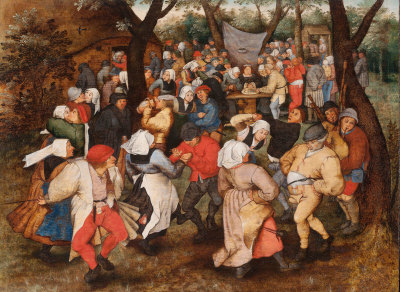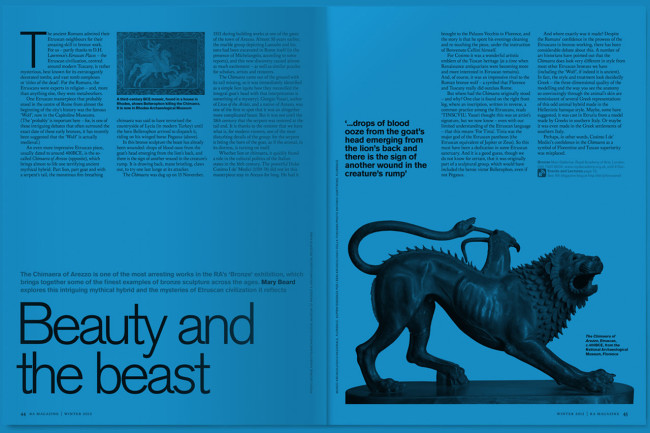Keeping it in the family: the Bruegel dynasty at Holburne Museum
Keeping it in the family: the Bruegel dynasty at Holburne Museum
By Laura Cumming
Published 17 February 2017
A show on the Bruegel dynasty celebrates a reattribution of a key painting, says Laura Cumming.
-
From the Spring 2017 issue of RA Magazine, issued quarterly to Friends of the RA.
Kissing, cuddling, reeling and sashaying – merry peasants dance through the Flemish woods, all knees-up jubilation, spilling bosoms and stout thighs. Pitchers are raised, wedding musicians puff their bagpipes and the bride sits stolidly before a platter of coins. From the meticulous leaves to the magpie swooping over village thatch, this is classic Bruegel, give or take a pie – the only question is, which Bruegel painted it?
Wedding Dance in the Open Air (c.1607-14) turns out to be by Pieter Brueghel the Younger, who added an ‘h’ to his signature to distinguish himself from Pieter Bruegel père. Curators at Bath’s Holburne Museum made this discovery during recent conservation of the work. The Holburne now owns three Brueghels, more than any other British museum, and celebrates with the exhibition Bruegel: Defining a Dynasty, which aims to disentangle fact from fiction concerning this confusing four-generation artist family.
-

Circle of Roelandt Savery, Animals Entering the Ark.

Pieter Brueghel the Younger, Visit to a Farmhouse, c.1620-30.

Pieter Brueghel the Younger (1564-1638), Robbing the Bird's Nest.

Circle of Roelandt Savery, Adam Naming the Animals, c.1610.

Circle of Jan Van Kessel II, Still Life with Cheese, c.1650.

Pieter Brueghel the Younger, Wedding Dance in the Open Air, 1607–14.

David Teniers the Younger, Boy Blowing Bubbles, c.1640.

Dutch or Flemish School, A Flower Garland with a Portrait of Mary II, mid to late c.17th.
-
Pieter “Peasant” Bruegel the Elder is the best known, for The Tower of Babel (1563) and Hunters in the Snow (1565). His “Proverbs” series is so famous as to be proverbial in its own right. The Holburne show includes the blind leading the Blind; the dog in a manger; and the supercilious peasant pointing to others’ failings as he steps straight into a pond. Yet these scenes are actually by his sons Pieter and Jan “Velvet” Brueghel – the latter also collaborated with Rubens and painted a marvellously zoological Eden containing toucans and guinea pigs.
The Bruegels were great diversifiers. One generation invents the paradise landscape, the peasant wedding and the village fable; the next one takes it further. The Holburne show is a chance to see both what unites and what distinguishes one man from another, but also to consider an enduring Bruegel puzzle. These artists appear inherently democratic: loving the Flemish peasants they painted, in all their mirth and folly. But were they laughing with or at the crowd?
Bruegel: Defining a Dynasty is on view at The Holburne Museum, Bath, until 4 June
Laura Cumming is art critic for the Observer and author of books including The Vanishing Man: In Pursuit of Velazquez.
-
-
Enjoyed this article?
Become a Friend to receive RA Magazine
As well as free entry to all of our exhibitions, Friends of the RA enjoy one of Britain’s most respected art magazines, delivered directly to your door. Why not join the club?

-












